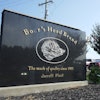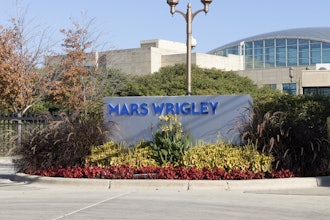
The food and beverage industry and social media “friended” each other awhile back. Across the industry, leading players from different sectors have learned to use social media and insights derived from analytics — usually supplied by outside partners — to drive consumer behavior. As data sources and data sets continue to grow, many in the food and beverage business see an advantage of bringing some “big data” capabilities in house. Doing so lets industry members maximize the competitive advantage that comes with being able to leverage more fully the information big data creates as a company asset. It also means that, sometimes, key data can be protected under trade secret law, even if some of it comes from outside social media sources.
Big Data & Food Now
Various approaches to defining big data exist. Some use a three-fold definition based on data volume, velocity and variety — or the “three Vs” — and occasionally a fourth “V” gets added for value, veracity and/or viability. This kind of big data includes both traditional structured data (which resides in a fixed field within a record or file) and unstructured data from sources like videos, social media and RSS from sources both within and outside an organization.
For others, big data actually means the process of applying new computing tools and capabilities like machine learning and artificial intelligence to the ever-expanding universe of massive, complex information. Under this approach, big data is a term that helps describe the storage and analysis of these large data sets using new, sophisticated and evolving computing techniques and tools.
Whatever definition gets used, food and beverage industry members have begun to leverage big data to gain insights, predict consumer behavior and make critical business decisions. For example, many large food companies are using big data social media analytics tools to deepen consumer empathy capabilities, adjust marketing programs in real-time and help bring the voice of the consumer to the table for decision making. CPG cousin Proctor & Gamble has even built “Business Spheres” meeting spaces in over 50 locations that allow 360° viewing of big data analytic visuals. A host of third-party providers offer other ways for those in food and beverage to generate, capture and act on data generated by consumers, particularly in social media.
Making It Yours: Big Data, Social Media & Trade Secrets
While trade secret laws differ from state to state, generally any innovative formula, practice, process, design, instrument, pattern or compilation of information receives protection from unauthorized use if in fact the information or innovation in question has been kept secret. Under this definition, the tweets, texts and Facebook updates of food and beverage customers obviously don’t qualify for trade secret status. But, once you bring social media data in-house, big data capabilities may allow you to use trade secret law to protect at least some of it.
Specifically, trade secret law may extend its protection to the analytic data sets and inferences that big data analysis generates because of the advanced properties and extended uses that exist within that derived data. That means that when food and beverage companies start thinking about big data, they should be thinking about trade secrets because, done right, big data should lead to proprietary insights. Trade secret protection usually attaches when the information is not generally known in the industry, reasonable measures have been made to keep it secret, and the secrecy has some economic value. Measures that can help protect social media big data secrets are the same as those used to protect other trade secrets: confidentiality agreements, specific contracts terms, secrecy policies, training and infrastructure.
Bringing outside social media data is not without risk. Data may come in with corruptions or malware (destructive software) that bypasses the data security measures your organization has in place. It may contain personably identifiable information (PII) or other information subject to privacy laws that requires special handling. Depending on where it came from, it may also be rights-encumbered or give rise to antitrust concerns, especially if it contains pricing information. Most significantly, it may impact existing data preservation obligations that arise from ongoing or contemplated litigation — the dreaded E-discovery. As a result, food and beverage companies contemplating big data efforts that take advantage of social media need to play both offense and defense so they can maximize the asset value of their information and protect themselves from other exposures.
Conclusion
However you define it, big data is here to stay. For food and beverage companies, the insights big data can generate from consumer social media data offer multiple opportunities — including the possibility of proprietary, protectable trade secrets. Planning to protect those trade secrets now while addressing the risks social media data presents allows food industry members an actionable plan for managing critical information assets.
Thomas Mahlum is a partner at Robins, Kaplan, Miller & Ciresi L.L.P. He represents Food and Beverage companies in complex business disputes involving contracts, intellectual property, unfair competition, trade secrets and fraud actions. [email protected].
For more food industry news and information, subscribe here and follow us on Twitter, Facebook or LinkedIn.



















